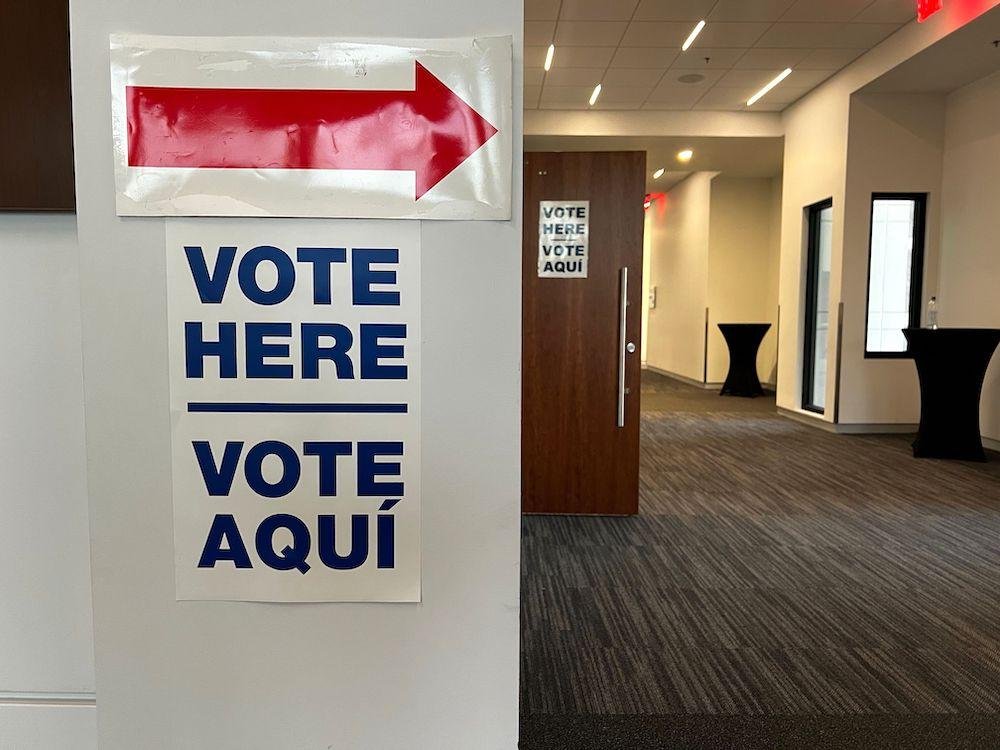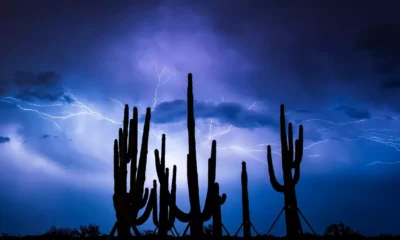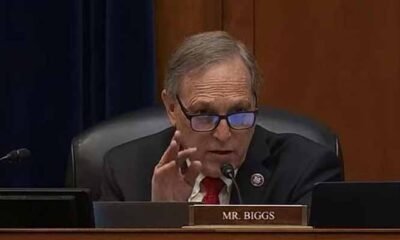arizona
Who Leads the Charge? Historical Insights Over Polls in Indian Country

As election season ramps up in Arizona, residents are receiving a surge of text messages soliciting their opinions on key political issues, highlighting the state’s status as a swing state. In just the last week, several texts have directly asked for feedback, with one conservatively themed message stating, “our future is at risk.” Another communication invited responses to a “presidential straw poll” about Kamala Harris, while yet another offered a $2 gift card in exchange for completing a lengthy survey.
These outreach efforts raise a central question: “Who is winning?” Polling data often provides a distorted picture of voter sentiment. According to FiveThirtyEight’s polling average, Harris currently leads by 3.5 percent. However, the organization has indicated considerable uncertainty in these numbers, cautioning that they are prone to fluctuation. This uncertainty is akin to weather forecasts indicating variable precipitation levels during an upcoming storm.
The complexity continues with a new Arizona poll conducted by Noble Predictive Insights, which surveyed 1,003 registered voters. The methodology employed aimed to reflect the diversity of the voter population, with adjustments made for gender, region, age, party affiliation, race, ethnicity, and education. Despite a margin of error of +/- 3.2 percent for likely voters, the results may not accurately represent the state’s demographic makeup, particularly regarding Native American and Alaska Native populations.
The oversight of these populations in polling data is significant. Historical trends in Arizona show that Democratic candidates often outperform expectations due to the delayed but impactful Native American vote. Polling typically struggles to capture this dynamic, leading to surprises during elections. Some pollsters defend their approaches, citing challenges in polling smaller demographic groups, but the implications of excluding these voices are crucial.
Pew Research highlights the broader context of polling accuracy, noting that historical polls have not favored one political side over another. Recent polling errors may stem from growing political polarization and declining trust among certain voter segments in traditional polling institutions. This reality makes it harder for marginalized demographics to feel their votes count in the grander electoral scheme.
When examining polls, it’s also essential to consider trends over time. Harris has consistently maintained a lead in polling since entering the race, which contrasts with Biden’s fluctuating numbers during his campaign. However, it’s vital to remember that the national popular vote is just one element of the electoral process in the United States, which operates on an Electoral College system. Key battleground states, such as Arizona, will significantly influence the outcome.
The demographic landscape continues to shift in states like Nevada, where the proportion of White voters has decreased notably since Obama’s re-election in 2012. Today, demographics indicate a growing need for a coalition that includes diverse racial and ethnic groups along with younger voters—essential components of the potential electoral base.
As the electoral landscape evolves, Harris and her campaign will be closely watched to see if they can successfully rekindle the broad coalition that characterized previous successful Democratic efforts. Voter sentiment regarding these shifts will begin to crystallize as early voting starts in October, marking a pivotal moment in the election cycle.


















